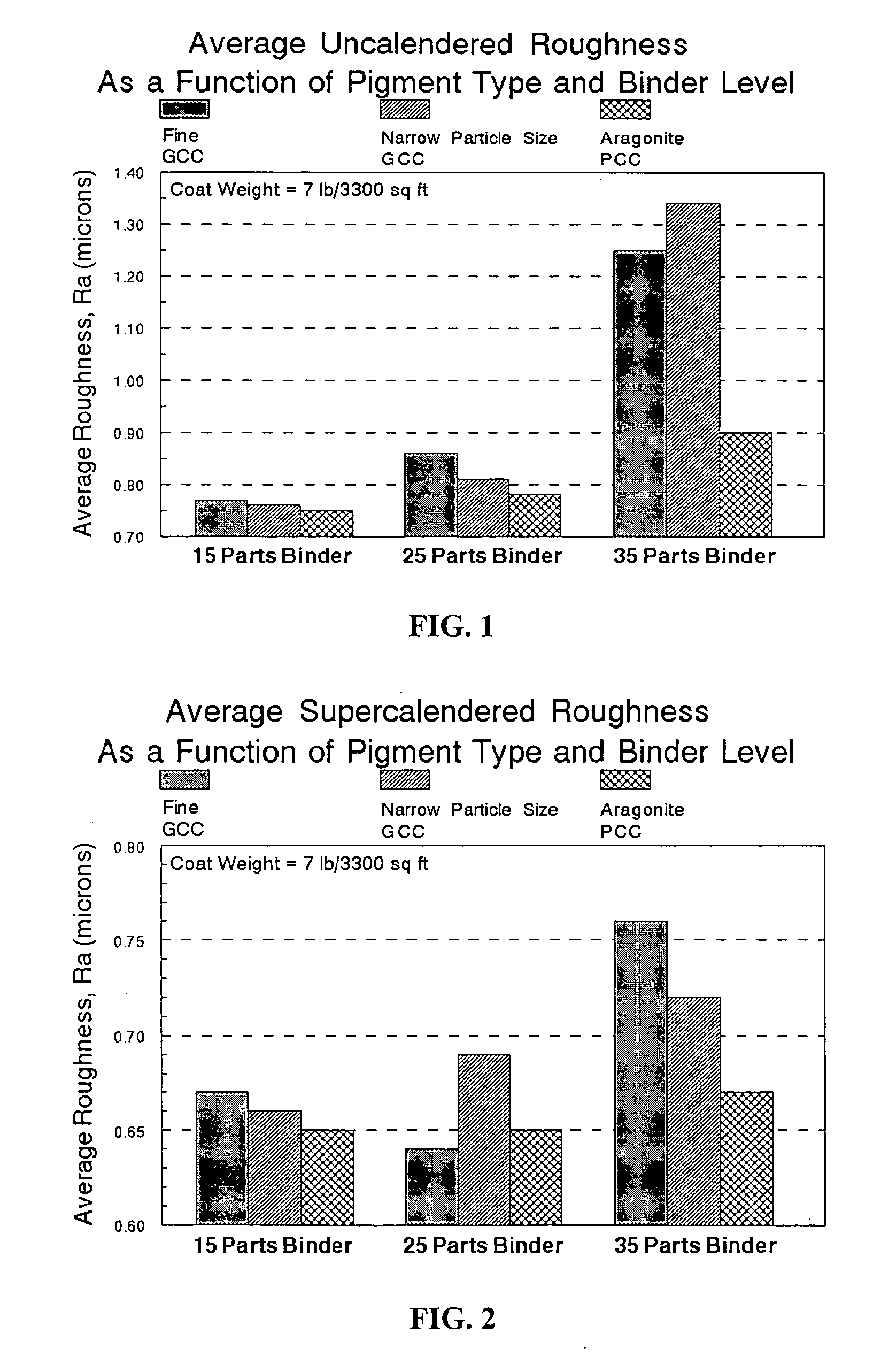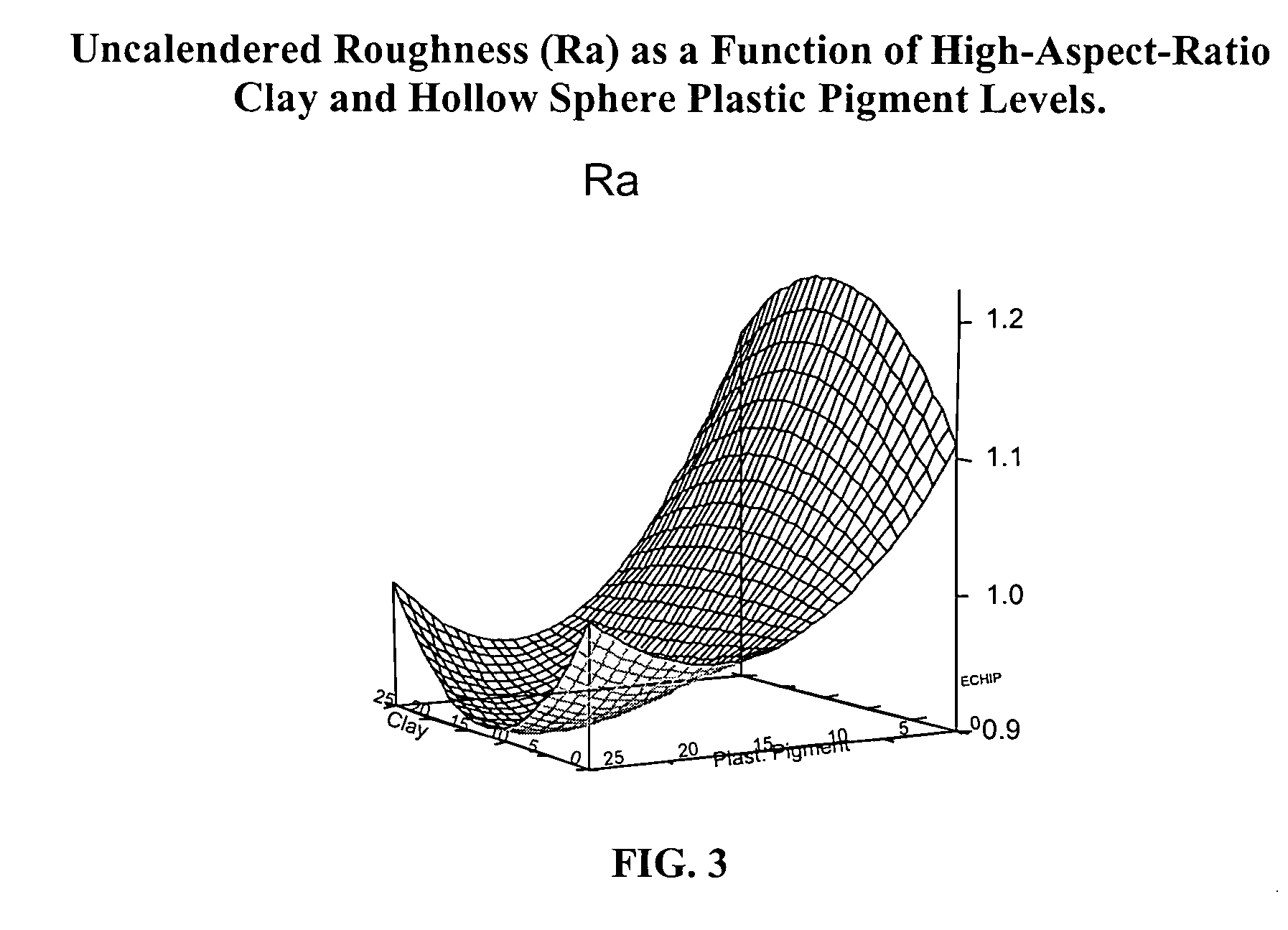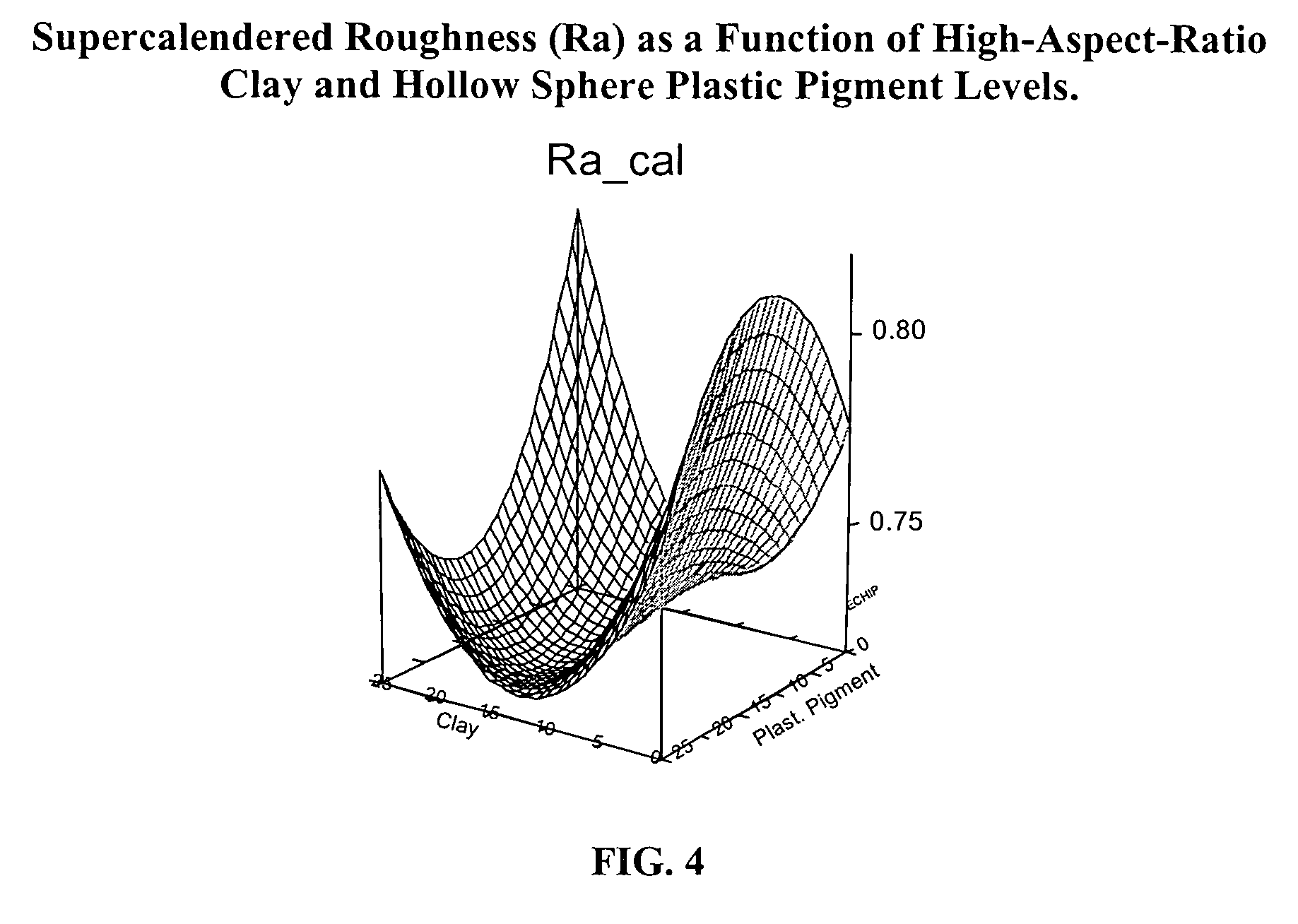Pigment selection for photographic base stock
a technology of pigment coating and photographic base stock, which is applied in the direction of thermography, coating, duplication/marking methods, etc., can solve the problem of only obtaining benefits
- Summary
- Abstract
- Description
- Claims
- Application Information
AI Technical Summary
Benefits of technology
Problems solved by technology
Method used
Image
Examples
example 1
[0038] Three types of calcium carbonate pigments were compared. The first is a fine ground calcium carbonate with 90% of particles less than two microns in diameter (Hydrocarb 90 by Omya). The second pigment is a narrow-particle-size ground calcium carbonate (Covercarb HP by Omya). The third pigment is a needle-shaped aragonite precipitated calcium carbonate (Opacarb A40 by Specialty Minerals). The object was to compare the pigments for their ability to decrease the roughness of an uncoated photobase sheet. The formulations contained 85 parts calcium carbonate pigment, 15 parts hollow sphere polystyrene pigment, and 15, 25 or 35 parts of an acrylic based latex binder. (This corresponds to about 74 to 63% calcium carbonate pigment and 13 to 11% hollow sphere polystyrene pigment, and 13 to 26% acrylic based latex binder on a percent basis of total pigment coating). Coatings were applied to a 112 lb / 3300 ft2 photobase paper that had been steel-to-steel calendered. A bent blade coater s...
example 2
[0039] A designed experiment was conducted to optimize the levels of hollow sphere polystyrene pigment and high-aspect-ratio clay, in conjunction with aragonite precipitated calcium carbonate, to minimize the roughness of a coated photographic base paper. The high-aspect-ratio clay had an aspect ratio, diameter to thickness, of about 80. The coatings were applied to an uncoated photographic base paper. The pigments were bound using 25 parts (about 20%) acrylic latex binder and 3 parts (about 2%) starch. The Roughness was measured using a Mahr-Feinpruf optical profilometer with an S8P processor. The cutoff length was 1 mm. The test data was used, in conjunction with ECHIP statistical modeling software, to generate a mathematical model of the design space containing all levels of hollow sphere pigment and high-aspect-ratio clay between 0 and 25 parts (about 20%) pigment. The remaining pigment portion was made up of aragonite precipitated calcium carbonate (between 50 and 100 parts (be...
PUM
| Property | Measurement | Unit |
|---|---|---|
| aspect ratio | aaaaa | aaaaa |
| surface roughness | aaaaa | aaaaa |
| roughness | aaaaa | aaaaa |
Abstract
Description
Claims
Application Information
 Login to View More
Login to View More - R&D
- Intellectual Property
- Life Sciences
- Materials
- Tech Scout
- Unparalleled Data Quality
- Higher Quality Content
- 60% Fewer Hallucinations
Browse by: Latest US Patents, China's latest patents, Technical Efficacy Thesaurus, Application Domain, Technology Topic, Popular Technical Reports.
© 2025 PatSnap. All rights reserved.Legal|Privacy policy|Modern Slavery Act Transparency Statement|Sitemap|About US| Contact US: help@patsnap.com



